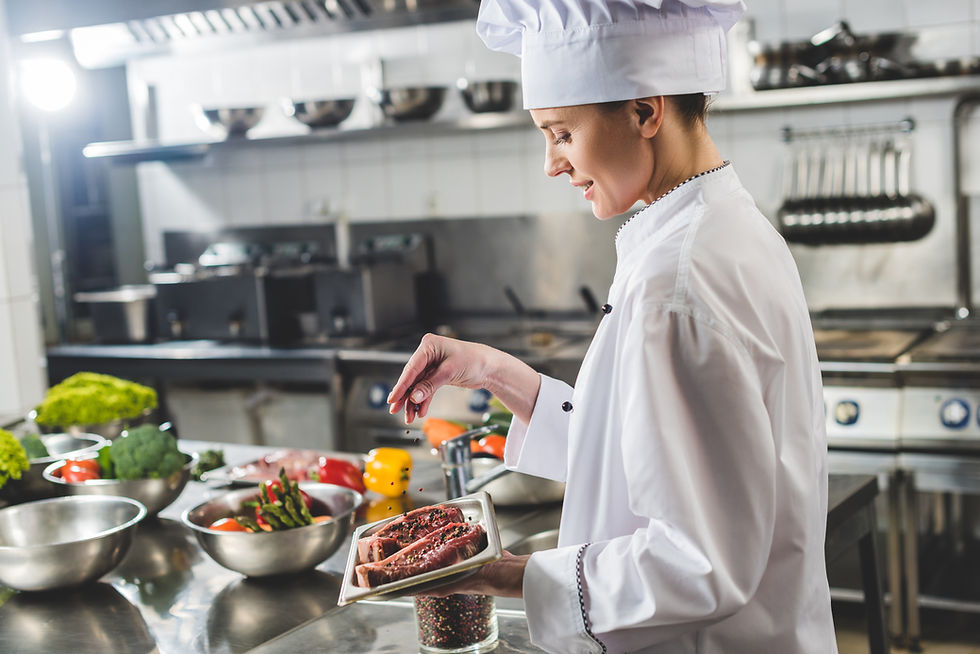Inside the Cold Chain: How Your Wholesale Meat Stays Fresh from Farm to Fork
- Maree O'Connor
- May 15
- 3 min read

When chefs order wholesale meat, freshness and food safety are non-negotiable. But how does that juicy eye fillet or tray of lamb racks make it from the farm to your coolroom without compromising quality?
Welcome to the cold chain — the invisible but essential journey your meat takes under strict temperature control.
Let’s break it down so you know exactly what’s happening behind the scenes—and how as a meat supplier we must get it right every step of the way.
What Is the Cold Chain, Exactly?
The cold chain refers to a temperature-controlled supply chain that keeps perishable goods—like meat—within a safe temperature range from harvest to delivery.
For meat, that means:
0°C to 4°C for chilled meat
-18°C or below for frozen products
In short: If the temperature breaks, the quality and safety break with it.
Why It Matters to Chefs and Foodservice Buyers
A reliable cold chain doesn’t just protect against spoilage—it preserves:
Flavour and texture of your meat
Shelf life, reducing waste and cost
Food safety, ensuring your customers don’t get sick
Compliance with Australian food handling laws and HACCP standards
A single break in the chain (even for an hour) can lead to bacteria growth, off smells, or water loss in meat—affecting cook quality and customer satisfaction.
The 5 Critical Stages of the Meat Cold Chain in Australia
1. Processing Plant / Abattoir
Once an animal is processed, the carcass is rapidly chilled to 0–2°C within hours to halt microbial growth.
MSA-graded beef, for instance, is chilled precisely to protect tenderness.
2. Packaging and Distribution Centre
Meat is cut, vacuum-sealed, and labelled with full traceability (batch ID, kill date, use-by).
It’s then stored in temperature-controlled storage rooms until transport.
3. Transport
Whether going interstate or locally, refrigerated trucks keep meat chilled or frozen the entire time.
We use temperature data loggers or live GPS temp tracking.
4. Wholesale Supplier Coolroom
Product is sorted, portioned (if needed), and packed for delivery—often within 24–48 hours of arrival at a HACCP-certified facility with well-maintained refrigeration systems.
5. Delivery to Venue
Last-mile delivery is often where risks creep in. We use insulated transport with rapid offload procedures.
6. How to Spot a Strong Cold Chain Supplier
HACCP certification
Offers batch tracking and use-by transparency
Maintains strict vehicle hygiene and refrigeration logs
Delivers in insulated crates or temperature-monitored vans
Are open about where and how their meat is stored
Allows site visits so you can see the process firsthand
7. What You Can Do to Maintain the Chain at Your Venue
Check meat temps on arrival (below 4°C for chilled, -18°C for frozen)
Store in your coolroom immediately, away from doorways or warm spots
Keep records of deliveries and any incidents of temperature breach
Never refreeze thawed meat unless cooked
Your venue is the final link in the chain—treat that responsibility with care.
Trust the Cold Chain, but Verify It
As the industry tightens its focus on traceability, compliance, and food safety, understanding the cold chain is no longer just a back-of-house issue—it’s a business essential.
Partnering with a wholesale meat supplier that maintains cold chain integrity not only protects your product—it protects your reputation.
Want to know if a meat supplier has a verified cold chain process? Ask them for their handling protocols or request a site tour. We’re happy to show you ours!








